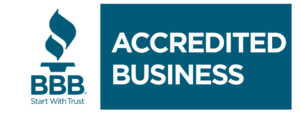Things to Know About Chapter 13 Bankruptcy in Wisconsin
There are two main types of bankruptcy that individuals can pursue, Chapter 7 and Chapter 13. This post focuses on Chapter 13. Chapter 13 bankruptcy acts more like a reorganization than anything else. It’s often called the “Wage-Earner’s Bankruptcy,” because it is designed for someone who has a regular income, but has become overwhelmed by debt. Unlike Chapter 7 bankruptcy (also called “Liquidation Bankruptcy”), it doesn’t have an income limit and you won’t need to worry about losing your valuable assets. It does have limitations on the amount of debt you have, though. To be eligible to file for Chapter 13 bankruptcy, you must have no more than $419,275 in unsecured debt and you also can have no more than $1,257,850 in secured debts, which includes mortgages and car loans. If your debt falls within these parameters, Chapter 13 bankruptcy may be for you. Here’s what you need to know.
Chapter 13 Plan Lasts from 3 to 5 Years
The typical Chapter 13 reorganization plan lasts from three to five years. That’s a long time. Many debtors find it impossible to maintain, though they are contractually and legally obligated to do so. Again, seeking professional advice from attorneys dedicated to bankruptcy law makes a tremendous difference here. Crafting a reorganization plan that anticipates periodic extra expenses and realistically assesses your earning potential over the next five years makes the length of the reorganization workable.
Chapter 13 Protects Your Assets
Filing Chapter 13 causes all collection actions to stop, including home foreclosure. Chapter 13 bankruptcy preserves your secured assets, so you don’t have to worry about losing your home or car. The objective is reorganization of debt rather than liquidation of assets.
Chapter 13 Eliminates or Diminishes Unsecured Debt
Unsecured debt includes credit card debt, medical bills, and other debts that don’t depend on collateral. Chapter 13 bankruptcy results in unsecured debt being discharged entirely or diminished significantly. If the debt is not completely eliminated, you will be paying off a small portion of what you owe over the course of three to five years.
Second Mortgage Can Become Unsecured Debt
If your home’s second mortgage is worth less than what you owe on your first mortgage, then you can petition the court to have your second mortgage classified as unsecured debt. Upon completion of your debt repayment plan, your second mortgage may be reduced greatly or discharged. This is a situation where the guidance of the experts at Burr Law can make the difference.
Other Debt Included in Chapter 13
One of the professional bankruptcy attorneys at Burr Law may be able to help you incorporate debts not usually available for reorganization. For instance, while domestic support obligations (DSO) like child support remain due and payable, past-due amounts can be worked into the reorganization plan and paid over three to five years. Likewise, if you owe back taxes, there are some situations where some amounts of tax debt can be incorporated into the reorganization plan too.
Necessary Forms
A typical Chapter 13 bankruptcy package could be 100 or more pages. When you file Chapter 13, you must complete the approved bankruptcy forms and any local bankruptcy forms required by the bankruptcy court. The forms for a Wisconsin Chapter 13 case include information about your eal estate, personal property, bankruptcy exemptions, debts, income, expenses, co-debtors (your spouse or life partner), leases and executory contracts. This is not an exhaustive list. The Statement of Financial Affairs is a form with almost two dozen questions about your received financial transactions. It includes income for the past two years, recent payments to certain creditors and insiders, a list of lawsuits, gifts, contributions, leases, transfers, and other information. The experts at Burr Law can assist you in gathering all the necessary information and completing the forms correctly and comprehensively.


